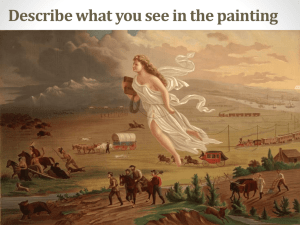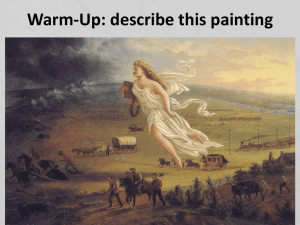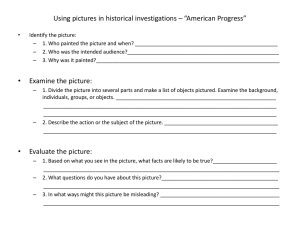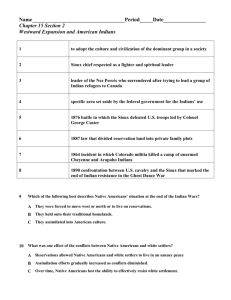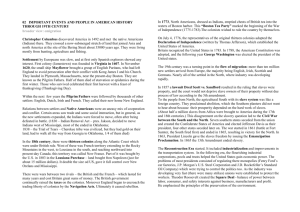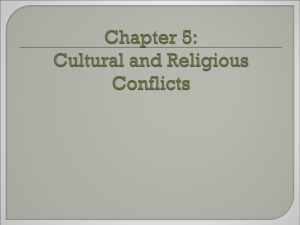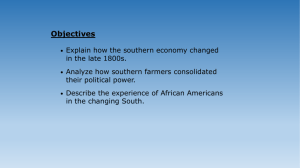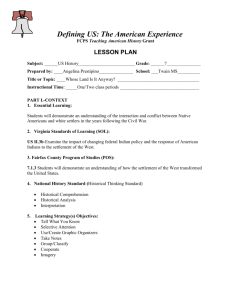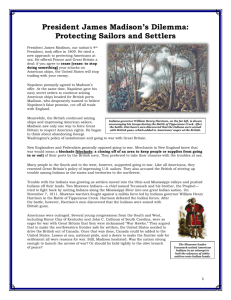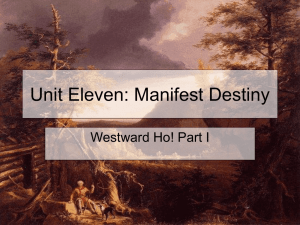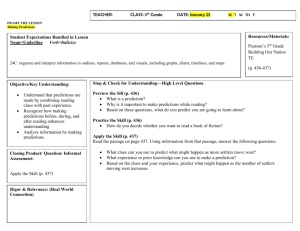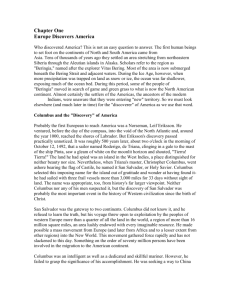American History Chapter 15 Section 2 Notes Objectives: Compare
advertisement
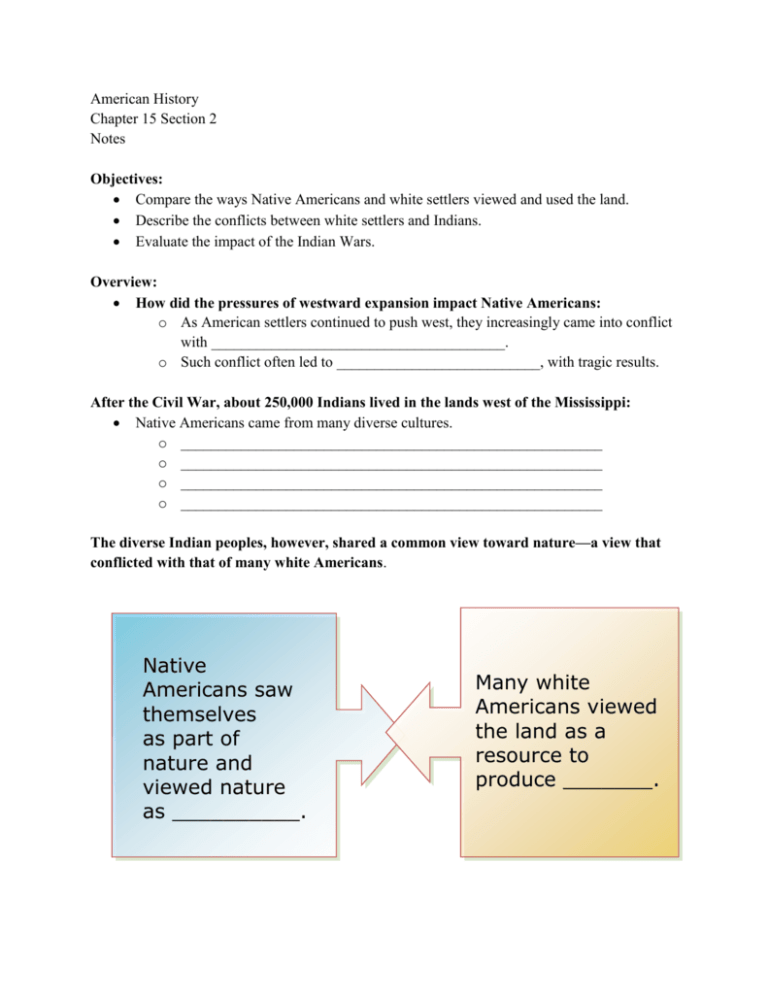
American History Chapter 15 Section 2 Notes Objectives: Compare the ways Native Americans and white settlers viewed and used the land. Describe the conflicts between white settlers and Indians. Evaluate the impact of the Indian Wars. Overview: How did the pressures of westward expansion impact Native Americans: o As American settlers continued to push west, they increasingly came into conflict with _______________________________________. o Such conflict often led to ___________________________, with tragic results. After the Civil War, about 250,000 Indians lived in the lands west of the Mississippi: Native Americans came from many diverse cultures. o ________________________________________________________ o ________________________________________________________ o ________________________________________________________ o ________________________________________________________ The diverse Indian peoples, however, shared a common view toward nature—a view that conflicted with that of many white Americans. Native Americans saw themselves as part of nature and viewed nature as __________. Many white Americans viewed the land as a resource to produce _______. During the 1800s, the government carried out a policy of moving Indians out of the way of white settlers: At first, Indians in the East were moved west, into the Indian Territory of the _________. As frontier settlers continued pushing west, however, this plan changed. o Indians were forced into __________________, no longer free to roam the Plains. Two other crises also threatened Native American civilizations: Settlers introduced diseases to which Indians had no immunity. Settlers slaughtered buffalo herds. Some Native Americans fought to defend their lands: But attacks and retaliation led to distrust—and to tragedy. o ________________________________________________ saw an unarmed camp of Indians under the U.S. Army protection killed by Colorado militia. Promises were made and peace treaties were signed, but they often were broken. Frustration turned to violence as the government moved to crush Indian resistance: The __________________________ War led to the defeat of the Southern Plains Indians. The Sioux were victorious at the Battle of the __________________________________. ______________________________ and the Nez Percés surrendered after attempting to retreat to Canada. As their way of life slipped away, some Indians turned to a religious revival based on the __________________________________________. o The ritual preached that white settlers would be banished and the __________________________ would return. o Fearful of _______________________________, government officials tried to ban the practice. o In an effort to end the Ghost Dance, the government attempted to arrest ________________________________________________. o However, he was killed in a confrontation with U.S. troops. o More than 100 Indians who fled were killed at _______________________________________________ o The Indian Wars were over. Some critics attacked government policies and defended the Indians’ way of life. Most leaders, however, hoped that Native Americans would _______________________ into American life. In 1887, Congress passed the Dawes General Allotment Act to encourage assimilation: • ________________________________________________________________________ • ________________________________________________________________________ • ________________________________________________________________________
